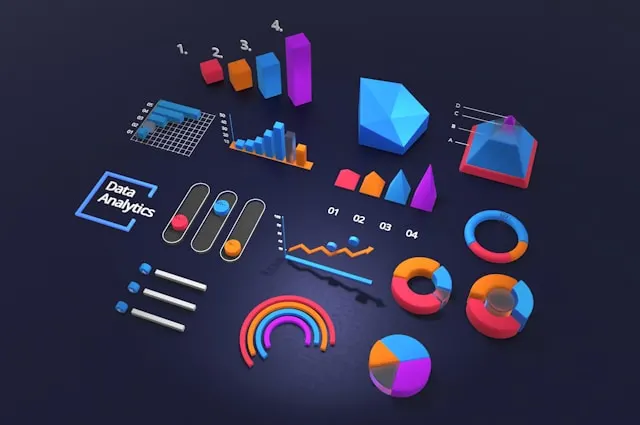Exploring data effectively is a key skill in data analysis, and Pandas, a powerful Python library, makes it easy to perform a wide range of data tasks. From loading data and basic exploration to cleaning, transforming, and visualizing, this guide will walk you through the essential steps of data exploration with Pandas.

1. Getting Started with Pandas
First, make sure you have Pandas installed. You can install it via pip if you haven’t already:
pip install pandasOnce installed, import Pandas as follows:
import pandas as pd2. Loading Data
Pandas allows you to read data from various file types, including CSV, Excel, SQL databases, and JSON files. Here’s how to read data from a CSV file:
# Load data from a CSV file
data = pd.read_csv('filename.csv')For Excel files:
data = pd.read_excel('filename.xlsx')For JSON files:
data = pd.read_json('filename.json')For SQL databases:
from sqlalchemy import create_engine
engine = create_engine('sqlite:///database.db')
data = pd.read_sql('SELECT * FROM table_name', engine)3. Basic Data Exploration
Once you’ve loaded the data, you can start exploring it. Here are some basic commands to get an overview:
3.1 Viewing the Data
- Preview the first few rows:
data.head() # Shows the first 5 rows by default
data.head(10) # Shows first 10 rows- Preview the last few rows
data.tail() # Shows the last 5 rows by default- Display dimensions
data.shape # Returns (rows, columns)3.2 Getting Data Information
- Basic information
data.info() # Provides information about the data types and non-null counts- Statistical summary
data.describe() # Gives statistics like mean, std, min, max for numerical columns
data.describe(include='all') # Includes categorical columns- Checking data types
data.dtypes # Displays data types of each column- Column names
data.columns # Lists all column names4. Data Cleaning and Preprocessing
4.1 Handling Missing Values
- Detecting missing values
data.isnull().sum() # Shows the number of missing values per column
data.isnull().sum() / len(data) * 100 # Shows percentage of missing values- Removing rows or columns with missing values
data.dropna() # Removes rows with any missing values
data.dropna(axis=1) # Removes columns with any missing values
data.dropna(thresh=data.shape[0]-3) # Keeps only columns with at least n-3 non-null values- Filling missing values
data.fillna(0) # Fills missing values with 0
data.fillna(data.mean()) # Fills missing values with the column mean
data.fillna(method='ffill') # Forward fill - uses previous value
data.fillna(method='bfill') # Backward fill - uses next value4.2 Removing Duplicates
- Detect and remove duplicates
data.duplicated() # Returns a Boolean series with True for duplicate rows
data.drop_duplicates() # Removes duplicate rows
data.drop_duplicates(subset=['column_name']) # Removes duplicates based on specific columns4.3 Data Type Conversion
- Converting data types
data['column_name'] = data['column_name'].astype('int64') # Convert to integer
data['date_column'] = pd.to_datetime(data['date_column']) # Convert to datetime4.4 Renaming Columns
- Rename columns:
data.rename(columns={'old_name': 'new_name'}, inplace=True)
# Rename multiple columns
data.rename(columns={'old_name1': 'new_name1', 'old_name2': 'new_name2'}, inplace=True)5. Exploring Data Relationships
5.1 Sorting Data
- Sort data by one column
data.sort_values(by='column_name', ascending=False) # Sorts in descending order- Sort by multiple columns
data.sort_values(by=['col1', 'col2'], ascending=[True, False])5.2 Filtering Data
- Filter by a condition
data[data['column_name'] > value] # Filters rows where the condition is met- Filter with multiple conditions
data[(data['col1'] > value) & (data['col2'] == 'some_value')]
data[(data['col1'].isin(['value1', 'value2']))] # Filter by multiple values5.3 Grouping and Aggregation
- Group data by a column and calculate aggregate
data.groupby('column_name').mean() # Groups by 'column_name' and calculates mean- Multiple aggregate functions
data.groupby('column_name').agg(['mean', 'sum', 'max'])
# Custom aggregations
data.groupby('column_name').agg({
'numeric_col': ['mean', 'max'],
'string_col': 'count'
})5.4 Merging and Joining Data
- Merge datasets
# Merge two dataframes
pd.merge(left_df, right_df, on='key_column', how='left')
# Join dataframes
left_df.join(right_df, on='key_column', how='inner')6. Data Visualization
6.1 Basic Plotting with Pandas
- Line plot
data['column_name'].plot(kind='line')- Bar plot
data['column_name'].value_counts().plot(kind='bar')- Histogram
data['numeric_column'].hist(bins=30)- Box plot
data.boxplot(column='numeric_column', by='category_column')6.2 Advanced Visualization with Seaborn
import matplotlib.pyplot as plt
import seaborn as sns
# Set style
sns.set_style("whitegrid")
# Scatter plot
sns.scatterplot(data=data, x='column1', y='column2', hue='category_column')
# Distribution plot
sns.histplot(data=data, x='numeric_column', kde=True)
# Correlation heatmap
sns.heatmap(data.corr(), annot=True, cmap='coolwarm')
plt.show()7. Data Export
After cleaning and analyzing the data, you can save it in various formats:
# Export to CSV
data.to_csv('cleaned_data.csv', index=False)
# Export to Excel
data.to_excel('cleaned_data.xlsx', index=False)
# Export to JSON
data.to_json('cleaned_data.json')
# Export to SQL database
data.to_sql('table_name', engine, if_exists='replace', index=False)8. Performance Tips
- Use appropriate data types to reduce memory usage
- Use
inplace=Truewhen possible to avoid creating copies - Use
.locand.ilocfor explicit indexing - Use vectorized operations instead of loops
- Consider using
chunkswhen reading large files:
# Reading large files in chunks
chunks = pd.read_csv('large_file.csv', chunksize=10000)
for chunk in chunks:
# Process each chunk
process_data(chunk)Conclusion
This beginner’s guide covered essential steps in data exploration with Pandas, from loading and cleaning to analyzing and visualizing data. Mastering these foundational skills allows you to gain insights and prepare data for more advanced analyses or machine learning tasks. Pandas integrates well with libraries like NumPy, Matplotlib, and Scikit-Learn, making it a versatile tool for data science projects.
Learn More:
7 Best Open-Source AI Coding Tools Every Developer Should Know